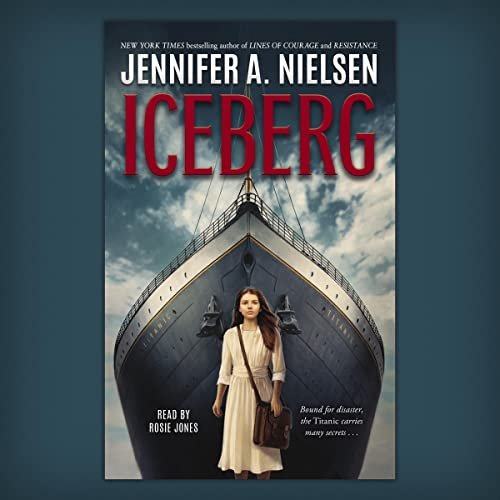Iceberg: A new viewpoint on the Titanic catastrophe through the eyes of a young, ambitious journalist.
“Iceberg” by Jennifer A. Nielsen is a historical novel set against the backdrop of the Titanic’s ill-fated voyage in 1912. The story follows Hazel Rothbury, a 12-year-old girl who stows away on the Titanic with the dream of becoming a journalist. Her journey is marked by curiosity, adventure, and a struggle for survival as the Titanic meets its tragic end.
Hazel’s character is portrayed as a diligent and curious young lady who is essential in revealing many parts of the Titanic’s trip. Her inquisitiveness leads her to learn about the ship’s structure, the nature of icebergs, and the refraction of light on calm waters, all of which play a role in the disaster’s unfolding. Hazel’s dreams of becoming a journalist rather than a factory worker in America are important to her character and motivate her actions throughout the novel.
The narrative is crafted in such a way that the suspense building up to the iceberg crash is built up. The first part, before to the accident, is entertaining and packed with Hazel’s adventures as a stowaway. She learns about the ship and its guests while participating in numerous adventures and solving mysteries. This section of the novel is considered as exciting, with Hazel’s activities of hiding and exploring keeping the reader interested. As Hazel develops friends and enemies while finding secrets among the crew and passengers, the story highlights themes of friendship, choices, and survival.
However, the work has garnered mixed reactions in terms of character development and storyline plausibility. Some reviewers criticized Hazel’s character for sounding too modern and knowledgeable of the Titanic’s fate, which is historically incorrect because the characters would not have known about the approaching tragedy. This component prompted criticism of the plot’s plausibility and the story’s speed. Despite these criticisms, many praised the novel’s location aboard the Titanic and the facts surrounding the accident. The book’s endnotes assist in distinguishing between true and fictitious components, adding educational value to the story.
Kirkus Reviews calls “Iceberg” a “page-turning historical drama.” Publishers Weekly praises the novel’s depiction of the Titanic’s attraction and social structure, stressing Hazel’s role in solving mysteries on board. These evaluations highlight Nielsen’s ability to create an entertaining tale that mixes aspects of adventure, intrigue, and historical knowledge. With her journalistic ambitions, Hazel acts as a channel for the reader to study the Titanic’s journey and its tragic conclusion.
According to Barnes & Noble, the book is a fascinating historical account that will appeal to readers of survival stories and those interested in the Titanic’s history. The novel is regarded as an exciting story in which Hazel must use all of her courage and brains to survive the calamity. Hazel’s past, which involves her going alone from England in order to avoid factory employment in the United States, gives dimension to her character and her actions aboard the Titanic. The novel is praised for creating a tapestry of survival and calamity, which makes it an intriguing read for its intended demographic.
Finally, Jennifer A. Nielsen’s “Iceberg” provides a new viewpoint on the Titanic catastrophe through the eyes of a young, ambitious journalist. While the narrative is engaging and exciting, the novel has received criticism for the realism of its main character and several plot aspects. Despite these criticisms, the novel is acclaimed for its historical accuracy, dramatic build-up to the tragedy, and depiction of the Titanic’s voyage, which make it a fascinating read for young people interested in historical fiction.
Sources: Kirkus Reviews, Historical Novel Society, History Woman Perspective, Publishers Weekly, Barnes & Noble









